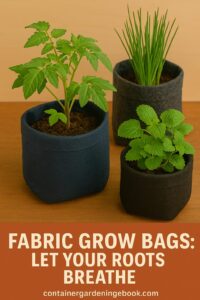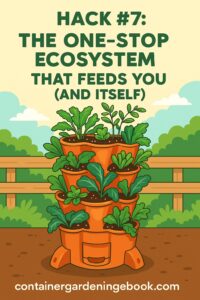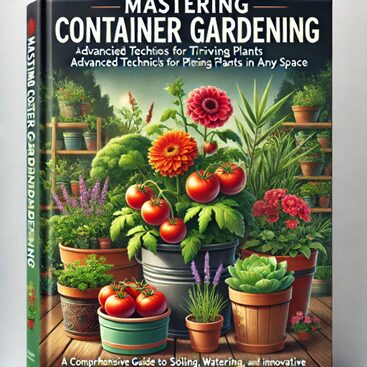Sustainable Food Growing In Small Space: 13 Amazing Hacks
Affiliate Disclaimer
This post contains affiliate links. If you purchase through these links, I may earn a small commission at no additional cost to you. This helps support the creation of more helpful content. Thank you for your support!
Discover the Power of Container Gardening
Let’s be honest.
You have a corner of your apartment that gets a sliver of sunlight for approximately 47 minutes a day. You have three dead succulents on your windowsill that you’ve named “Hope,” “Nope,” and “Nope II.” Yet, you scroll through Instagram and see people harvesting lush, organic tomatoes from balconies the size of a yoga mat, and a little green monster—not the eco-friendly kind—stirs within you.
You want that. You want to casually tell your friends, “Oh, this salad? I grew it myself,” while striking a heroic pose. But you also care about the planet. You’re not about to start a farming operation that uses more plastic than a 90s boy band’s merchandise table.
In This Article
- What you want is sustainable food growing in small space.
- The Regrow-Your-Scraps Kitchen Lab
- Microgreens: For Gardeners with No Patience
- DIY Mason Jar Herb Garden
- Fabric Grow Bags: Let Your Roots Breathe
- The Upside-Down Tomato Planter
- The Self-Watering Wine Bottle
- The One-Stop Ecosystem That Feeds You (And Itself)
- Gutter Gardens for Wallflowers
- The Balcony Bean Trellis
- Choose Plants That Don’t Have a Death Wish
- Compost “Lasagna” in a Bucket
- Speak Fluent “Sunlight”
- Group Your Plants by Thirst
What you want is sustainable food growing in small space.
You want to reduce waste, maybe even use organic methods, and do it all without getting evicted for turning your fire escape into a rogue potato farm. Good news, my eco-conscious, spatially-challenged friend. It’s not only possible; it’s easier than you think. Forget everything you think you know about needing a sprawling backyard. Here are 13 amazing hacks to turn your tiny home into a verdant, food-producing paradise.

1. The Regrow-Your-Scraps Kitchen Lab
Before you toss those kitchen scraps, stop. You’re holding future food. Take the white root ends of your green onions, the base of a celery stalk, or the bottom of a head of romaine lettuce. Place them in a shallow dish of water on your sunniest windowsill. Within a week, you’ll witness a small miracle as new green shoots emerge. It’s a powerful first step in reducing food waste and starting your indoor gardening journey.

3. DIY Mason Jar Herb Garden & 4. Fabric Grow Bags
Turn that collection of mason jars into a chic herb garden. Add a layer of pebbles for drainage, fill with potting mix, and plant herbs like basil, mint, or parsley. It’s a direct blow against single-use plastics. For larger plants, consider fabric grow bags. They are lightweight, reusable, and prevent plants from becoming root-bound through “air-pruning,” leading to a much healthier root system.

7. The One-Stop Ecosystem & 8. Gutter Gardens
For those who are serious, the Garden Tower 2 is a revolutionary secret. It grows 50 plants in four square feet and turns kitchen scraps into organic fertilizer via a built-in worm composting tube. For another vertical hack, mount a section of rain gutter on a bare wall. It creates a slim, stylish, and surprisingly productive planter bed for shallow-rooted crops like lettuce, spinach, and strawberries.

11. Compost “Lasagna” & 12. Speak Fluent “Sunlight”
Start composting with a simple bucket. Drill holes for aeration and layer “green” materials (veggie peels, coffee grounds) with “brown” materials (shredded cardboard, dry leaves). This turns your garbage into “black gold” for your plants. Before you do anything, however, you must understand your home’s sunlight. Map where the sun hits and for how long. This is the most critical step to prevent waste and ensure you match the right plant to the right place.

13. Group Your Plants by Thirst
Don’t put a drought-tolerant rosemary in the same pot as a thirsty basil. Grouping plants by their water needs is a crucial strategy for success. Create a “Mediterranean pot” with rosemary, thyme, and oregano, and a separate “moisture-lovers” pot for basil and parsley. This conserves water and prevents you from accidentally drowning or dehydrating your plants.


Leave a Reply